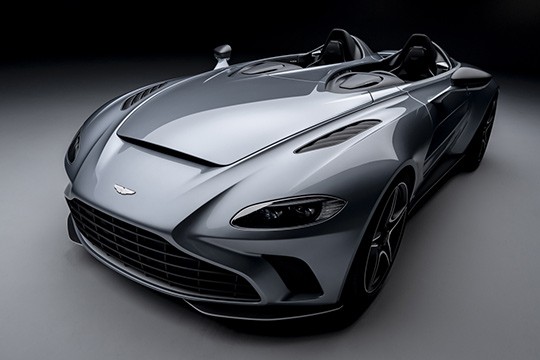ASTON MARTIN V12 Speedster Models/Series Timeline, Specifications & Photos
First production year: 2020
Engines: Gasoline
Body style: Coupé (two-door)
At the beginning of March 2020, Aston Martin unveiled the V12 Speedster limited edition supercar, made for those craving a purist-oriented open-top vehicle with a nostalgic soft spot for old and glorious race cars.
While the Geneva Motor Show officials had just canceled the most significant automotive spring event in Europe, the British car manufacturer announced the V12 Speedster. It was an unpractical and powerful open-top vehicle that could thrill its owners with its look, feel, and rarity. Aston Martin made the stunning supercar in just 88 units, and the design team that penned it took its inspiration from the 1959 Aston Martin DBR1, which won the 24 Hours of Le Mans race. The car's development took just 12 months to complete, and deliveries started in 2021. Aston Martin had different plans for its creation, but the pandemic postponed them.
The breathtaking-looking V12 Speedster shook enthusiasts with its front fascia, which was designed to express the car's performance and the company's design language as well. It featured a broad, classic Aston Martin shell-like grille. It was flanked by vertical side scoops needed to cool the front brakes and lower aerodynamic elements that reduced the ground effect and increased downforce. Above the grille, the automaker placed a broad and slim air intake and a set of vents on the upper sides of the fenders to release the air trapped inside wheel wells.
With a low-slung profile and the lack of a windshield, the V12 Speedster impressed its customers, who had to understand that the car had to be driven with a helmet on. However, the automaker installed a set of vents on the hood that deflected air above the occupants' heads. The swan doors could be raised to ease the customers' ingress and egress into the cockpit. Behind the cabin, the double-bubble element from the rear deck also concealed the roll-over safety arches, similar to those installed on open-top race cars. Finally, the rear fascia was adorned by a curved wing above the taillights and a massive diffuser with side twin exhausts under the bumper.
Aston Martin made the car's cockpit to fit two occupants and installed a pair of leather-wrapped sports seats. Between them, the car manufacturer installed a spine that crossed the cockpit from front to back, dividing it into two distinct sides. It was decorated with the silhouettes of three F/A-18 fighter jets produced by Boeing. In front of the driver was the instrument panel, while on the center stack was the touchscreen for the infotainment system. Aston Martin decorated the cabin with satin-finished carbon fiber elements, saddle leather, and aluminum. It was a mix of elegance, sportiness, old-school trims, and high-tech amenities.
Under the long hood, Aston Martin placed its well-known V12 5.2-liter engine that produced 700 PS (690 hp) with the help of two turbochargers. It was paired with a ZF automatic transmission that sent all the 753 Nm (555 lb-ft) of torque to the rear wheels. As a result, the car could rocket from naught to 100 kph (0-62 mph) in just 3.5 seconds on its way to a top speed of 300 kph (186 mph).
